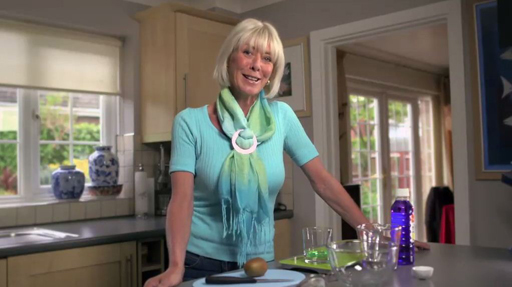4.1.1 The experiment
Have you chosen which fruit you’re going to extract DNA from? Follow Janet’s instructions in the video (or use your activity booklet [Tip: hold Ctrl and click a link to open it in a new tab. (Hide tip)] ) to conduct the experiment.

Transcript
Remember that vodka and rum are strongly alcoholic and, in the case of methylated spirits, also highly toxic. The ethanol in them is also highly flammable. You should also take care when you peel and chop your kiwi fruit: you don’t want any bits of finger mixed in with the fruit!
Although you are performing this experiment in your home, it actually follows the same basic principles as more advanced lab-based DNA extraction procedures, so you are, in effect, doing something that scientists in labs do every day.
The procedures you are going to carry out are:
- the mechanical and thermal disruption of the cells
- the liberation of the DNA with an extraction buffer
- the precipitation of the DNA.
As you perform the experiment, you should recognise each of these stages taking place. The mashing and heating of the kiwi mixture represents the mechanical and thermal disruption of the cells. The washing-up liquid and salt water mixture forms your extraction buffer and both work to liberate the DNA, in other words remove it from the cells. The detergent works just like it does on your dishes and dissolves the lipids (fats) in the cell membranes and nucleus where the DNA currently resides.
DNA is highly soluble in water but not soluble in ethanol (alcohol). When you add the alcohol to the top of your kiwi mixture, the DNA precipitates (or deposits in a solid form) at the interface between the water and the alcohol. The salt that you added earlier helps encourage the DNA to clump together by neutralising the negatively charged phosphate groups that exist within the DNA structure.
When you have finished the experiment and extracted the DNA, move to the next section to discuss your results.
